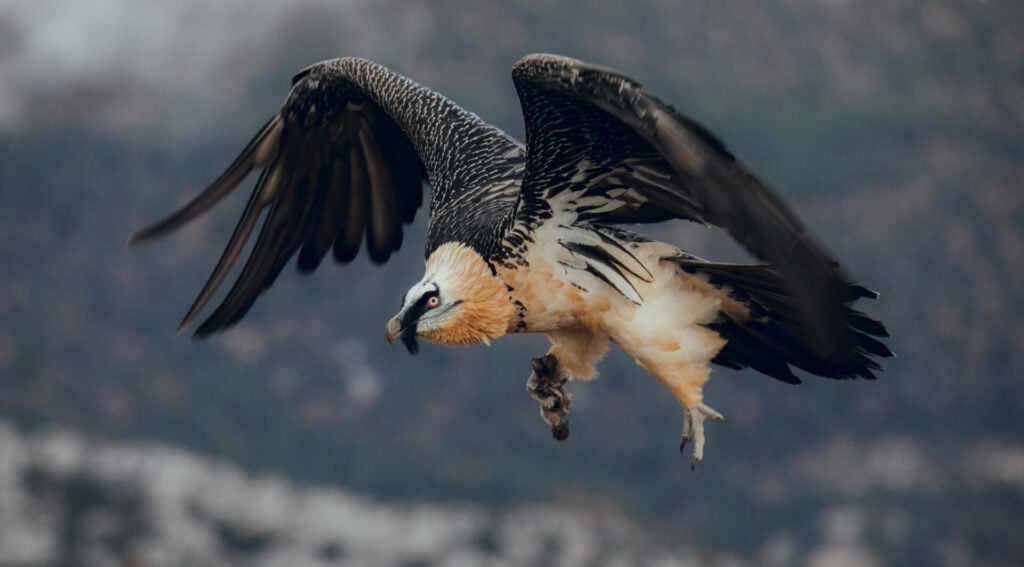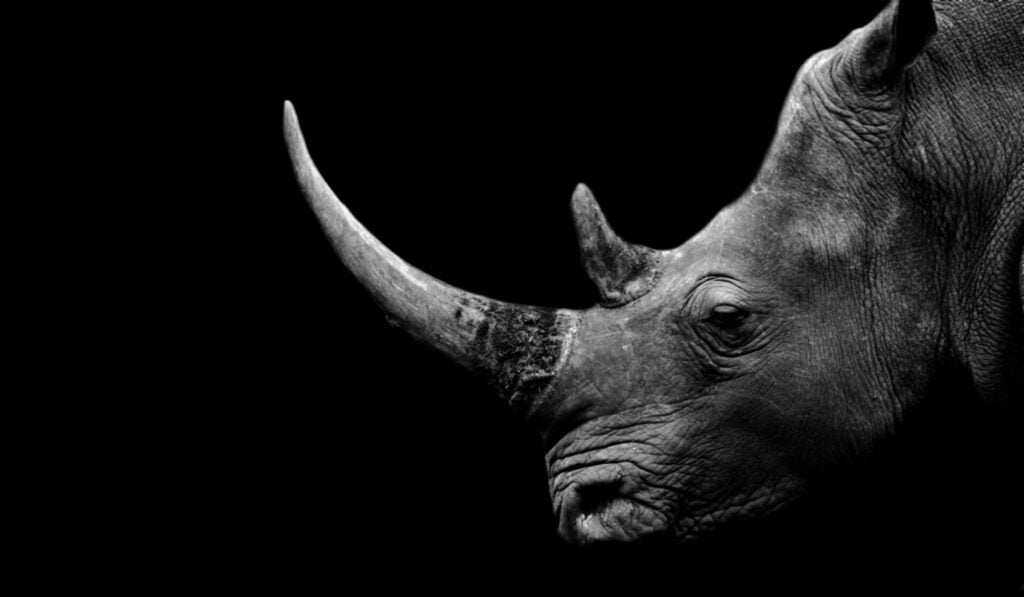Believed to have evolved when dinosaurs roamed the earth, seagrass meadows are one of the world’s most biodiverse, yet understudied ecosystems. The ocean’s only underwater flowering plant, they can grow up to two-metres-long, creating vast underwater savannas spanning shallow coastal waters from the Arctic to the tropics.
Havens for marine life, they provide habitat for endangered species like seahorses and ‘sea cow’ dugong, and are spawning grounds for the likes of cuttlefish and sharks. A single hectare of seagrass can support a staggering 80,000 fish.
Overshadowed by their more charismatic coral cousins, these underdogs of the undersea are silently slipping away at a rate of 20 football fields a day, which could spell disaster for the planet
As well as buffering against storm surges, stabilising coastal erosion with their roots and naturally filtering seawater of pollutants, seagrasses provide critical wildlife corridors between mangroves and coral reefs. While most people know the Great Barrier Reef has been bleached almost to death, few could tell you that 35 per cent of the world’s seagrasses have disappeared in the last 50 years.
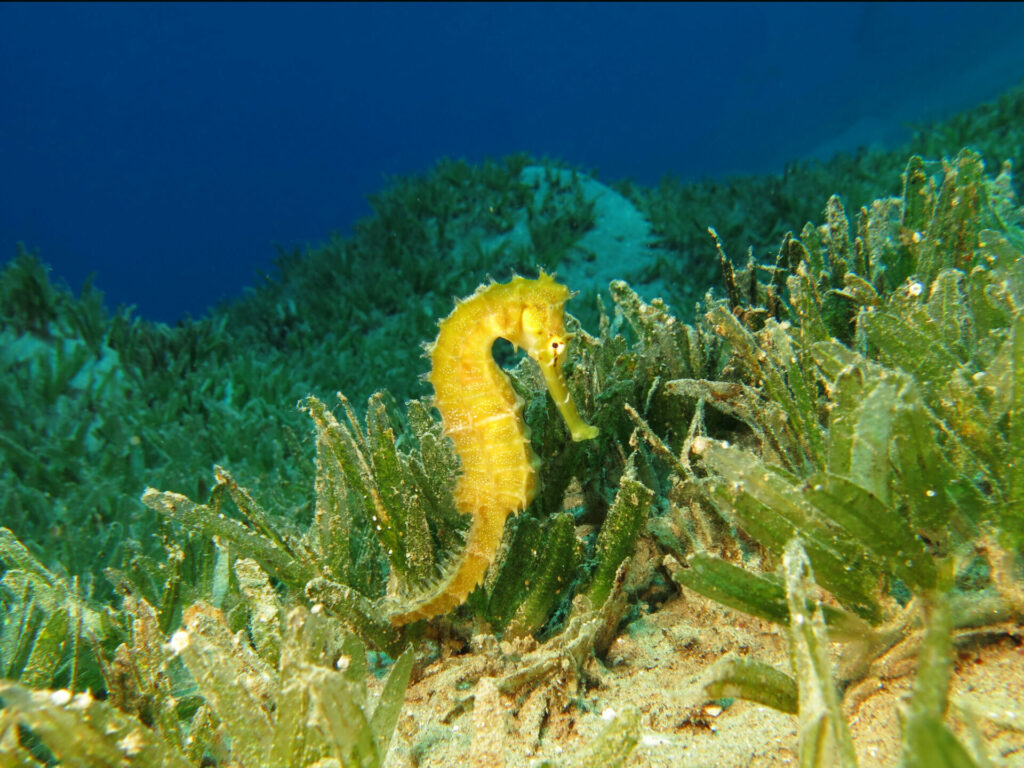
Overshadowed by their more charismatic coral cousins, these underdogs of the undersea are silently slipping away at a rate of 20 football fields a day, which could spell disaster for the planet. Critical allies in the war against climate change, seagrasses capture carbon 35 times faster than rainforests.
The Seagrass Prairies of Abu Dhabi
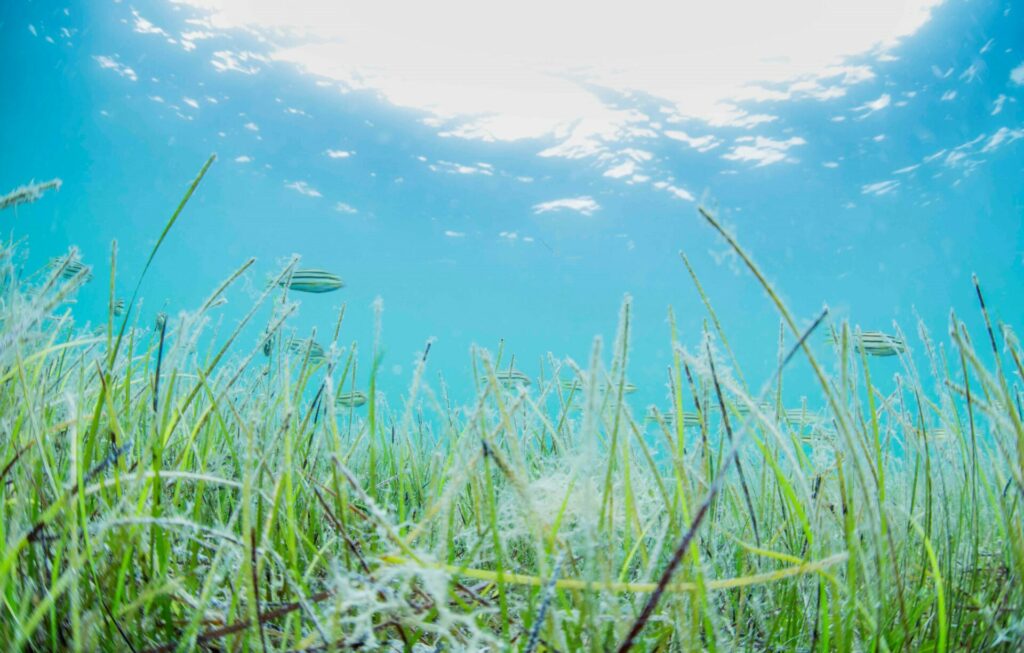
‘Seagrasses sequester carbon dioxide and store organic carbon underneath their soils for millennia [if undisturbed] which helps in mitigating climate change,’ marine biologist Maitha Mohamed Al Hameli tells The Ethicalist.
Carpeting some 1,850 square miles, the emirate claims one of earth’s largest seagrass fields. ‘Subtropical conditions in Abu Dhabi with warmer months and good light conditions drive the seagrass growth and expansion around Abu Dhabi,’ Al Hameli explains. She works for Abu Dhabi’s Environment Agency (EAD), whose three-pronged project to restore the emirate’s coastline has earned it global recognition. Last December it was honoured with a world restoration flagship award from the United Nations for its efforts in creating nurseries for seagrass, planting mangroves and transplanting coral.
Destructive fishing practices like dredging, trawling and ghost nets either damage or suffocate the seagrasses, with propellers and anchors from leisure and fishing vessels ‘scarring’ them – damage that can take years of recovery
Of the world’s 72 seagrasses, the emirate’s three species ‘have a higher threshold and ability to withstand the heat and the turbid waters of Abu Dhabi,’ Al Hameli says. Which is good news for the herbivorous dugong. Staying true to its ‘sea cow’ name, these aquatic mammals munch through 30 kilos of seagrass (their sole food source) a day.
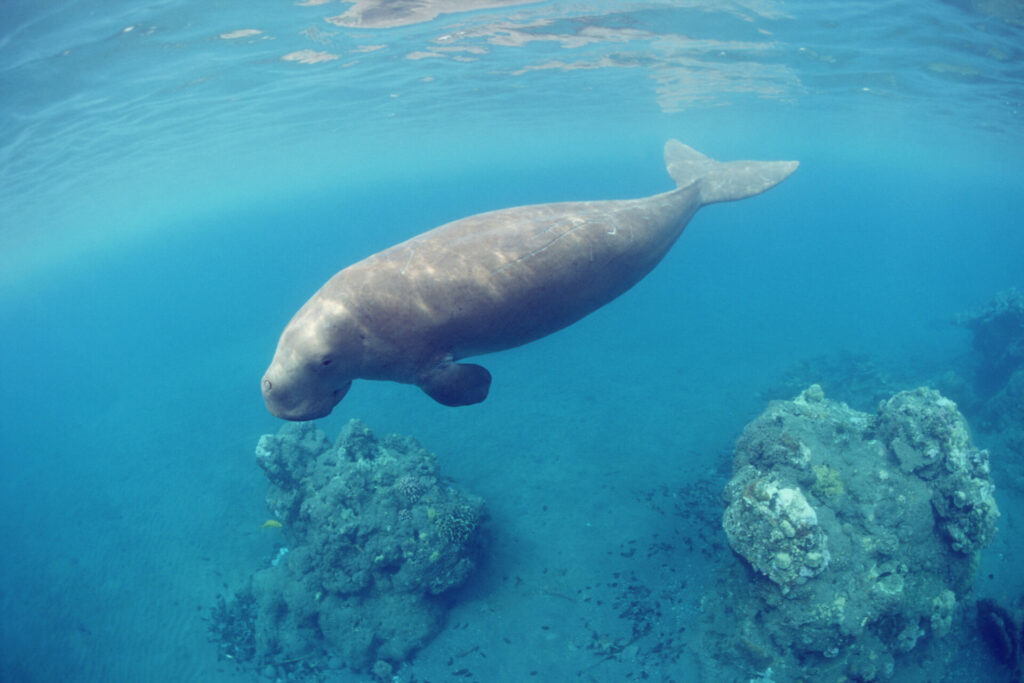
Declared functionally extinct in Chinese waters last August, dugong have a stronghold along Abu Dhabi’s coastline (3,000 and counting), whilst the Arabian Gulf claims the world’s second largest population after Australia.
They favour the shallow waters of islands like Bu Tinah and Marawah: a designated UNESCO Biosphere Reserve where 8,000-year-old-dugong bones have been excavated. But the future of these real-life mermaids is by no means certain. Land reclamation threatens dugong and their seagrass habitat in the Arabian Gulf, along with oil and gas: the region’s main marine pollutants.
Endangered Zone
Regrettably, nearly all seagrasses’ nemeses are anthropogenic – caused or influenced by people. While land reclamation either strips them from the seabed or clouds the water with sediment (stopping oxygen and sunlight reaching the seagrasses), harmful industrial and agricultural run-off accelerates algae blooms, preventing seagrasses from photosynthesising.
Meanwhile, destructive fishing practices like dredging, trawling and ghost nets either damage or suffocate the seagrasses, with propellers and anchors from leisure and fishing vessels ‘scarring’ them: damage that can take years of recovery. Scientists from the University of Florida are using AI to survey a 400-square-mile area in Florida’s Tampa Bay, recording 24,000 seagrass scars so far.
Longer term, seagrass meadows greatest nemesis is rising ocean temperatures. Firmly rooted to the seabed, they are incapable of migrating to cooler waters.
Mapping The Ocean’s Meadows
Less than a fifth of the world’s seagrasses are mapped which is a huge obstacle, since in order to protect something, you first need to know where it is. Attempting to right this wrong is The Seychelles, whose 115 paradisical islands boast some of world’s highest densities of seagrass, capable of storing 250 million tonnes of organic carbon.
Quite literally putting this fragile ecosystem on the map is a two-year-long ‘Seagrass and Carbon Mapping’ project, that’s pooling the expertise and resources of several local non-profits, two universities and the German Aerospace Agency.
One of its key players is American-Seychellois biologist Dr Jeanne Mortimer, affectionately nicknamed ‘Madame Torti’ for her turtle conservation work on the islands. ‘Seagrass provides a very important habitat for the two main species of sea turtles [endangered green and critically endangered hawksbill] which nest and forage in Seychelles,’ she tells The Ethicalist. The Indian Ocean archipelago hosts the world’s fifth largest nesting population of hawksbills, and has 15,000 annual clutches of green turtles: a testament to decades of conservation efforts.
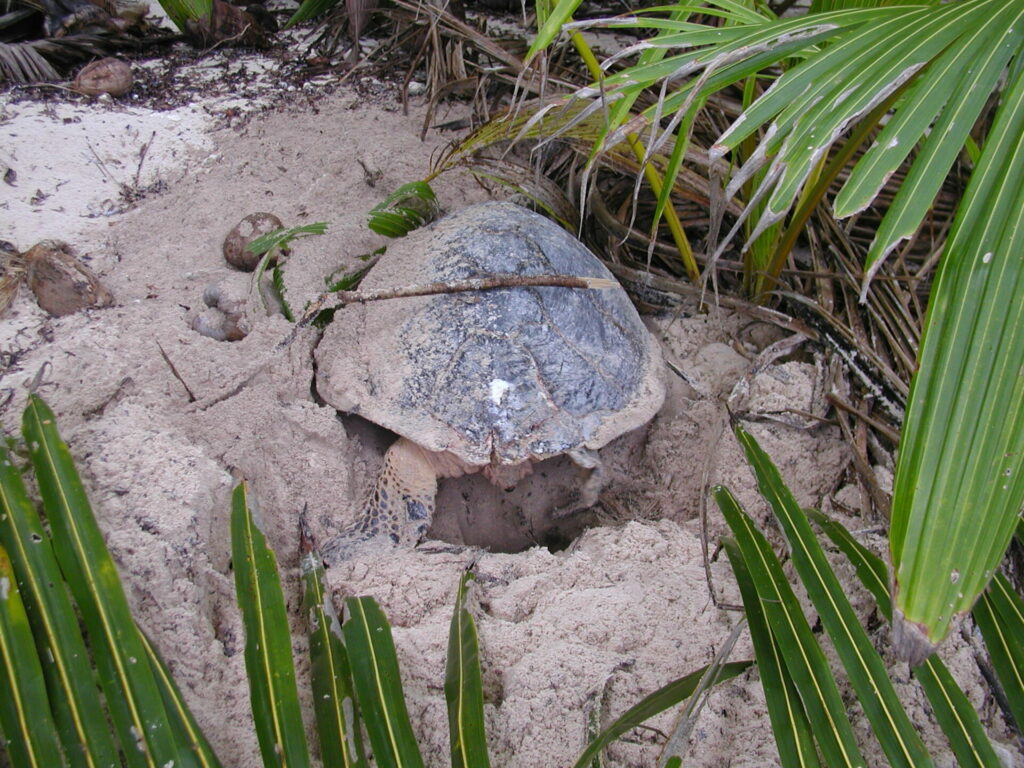
‘The biggest threat to seagrasses [here] is land reclamation in the vicinity of Mahé and Praslin [the archipelago’s two largest islands],’ she continues. To date, the project’s team have collected 2,600 samples of sediment cores from the seagrass meadow floor. This data, together with extensive satellite imagery, is set to make the Seychelles the world’s first country to accurately map its marine meadows.
Seeding A Greener Future
Harnessing technology and citizen science could be key to mapping the rest of the world’s seagrasses. In 2018, conservation charity Project Seagrass developed a special app to help map unknown seagrass meadows. Smartphone users simply upload photos of seagrasses that they’ve spotted, which enters into a huge online database. It’s been created in partnership with Wales’ Swansea University, who are undertaking Britain’s largest seagrass restoration project in collaboration with Project Seagrass, WWF UK and Sky Ocean Rescue.
According to a scientific study conducted in 2021, the UK has lost 90 per cent of its once thriving seagrasses in the last century. ‘It can take between 5-10 years for a [seagrass] meadow to be established,’ Head of Project Seagrass’ communications Bethan Thomas says of The Seagrass Ocean Rescue Project, which planted one million seagrass seeds in Wales’ Pembrokeshire’s Dale Bay in 2020.
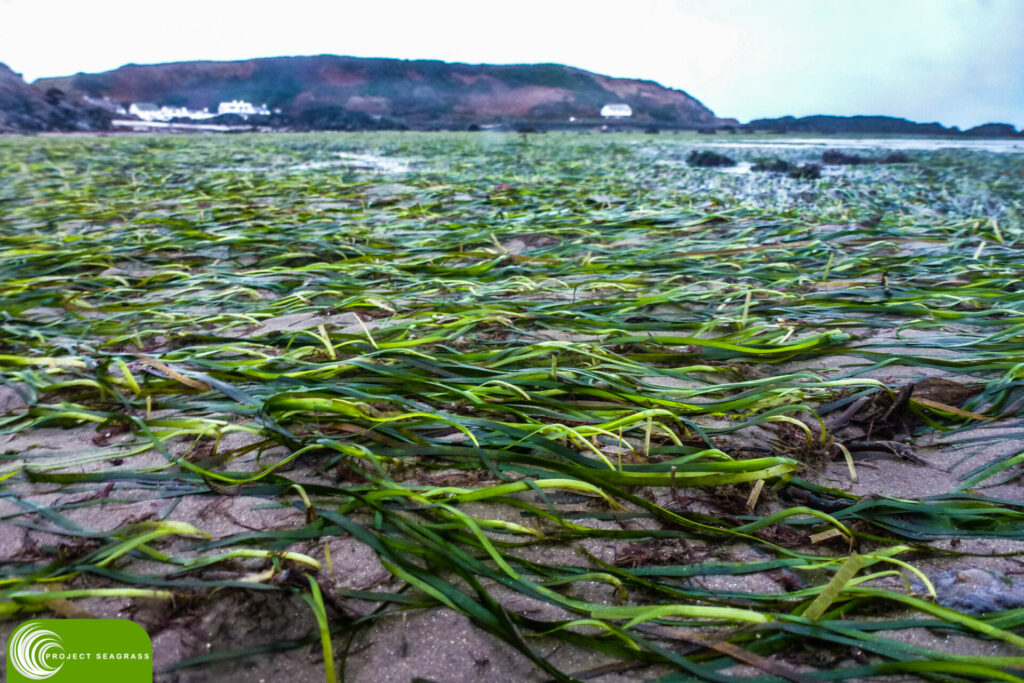
The next phase will see 25 acres of seagrass meadows being rewilded in North West Wales’ Llŷn Peninsula and Anglesey Island, with trials starting this year. ‘[With the help of volunteers] the team will be planting hessian bags by hand and ‘injecting’ seeds [harvested from nearby donor meadows] into the sediment,’ a spokesperson from Project Seagrass toldThe Ethicalist.
Making The Invisible Visible
‘Seagrasses are the forgotten ecosystem,’ UN representative from the Seychelles Ronald Jumeau wrote in a 2020 UN report. Forgotten, despite supporting 20 per cent of the world’s biggest fisheries and three billion people according to the Intergovernmental Panel on Climate Change.
But change is afoot. Between mapping, rewilding, greater protections and citizen scientists, these invisible lungs of the sea are slowly stepping out of the shadow of their colourful coral cousins.










